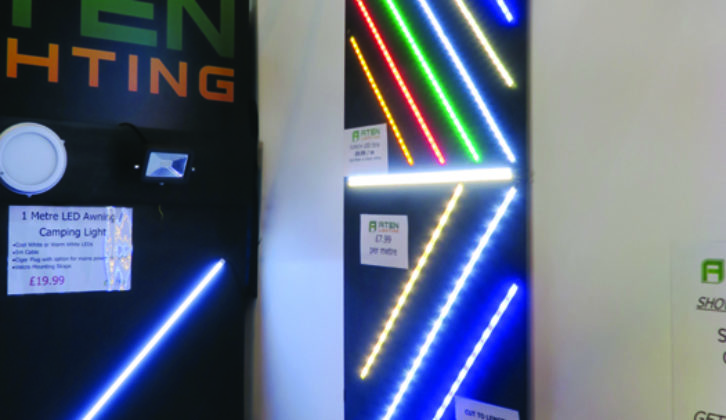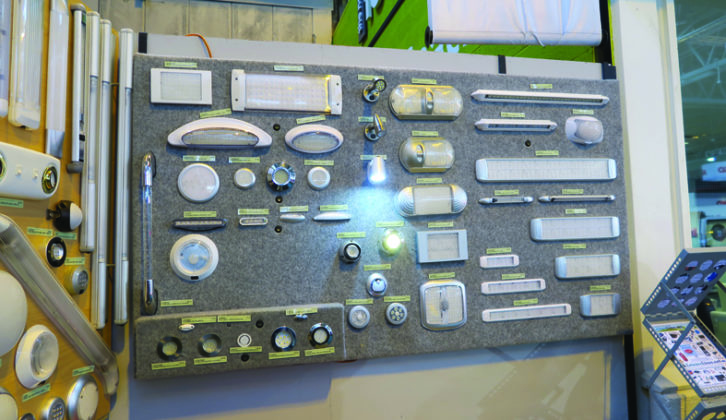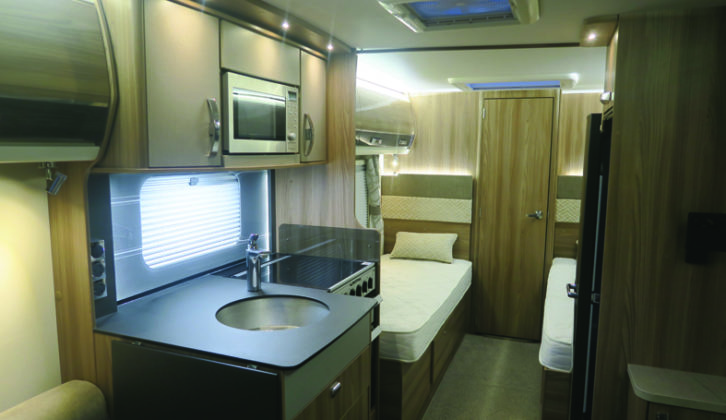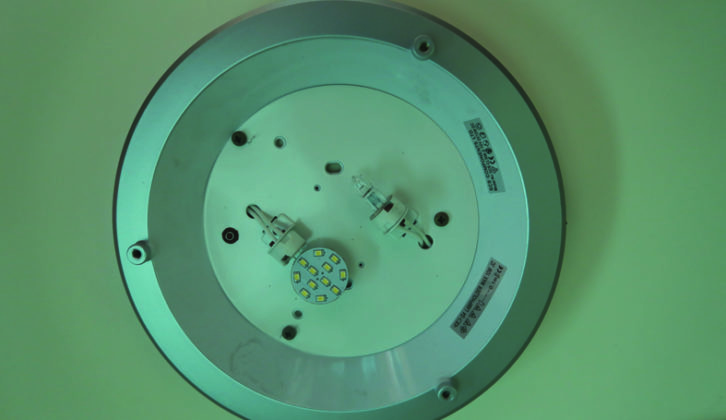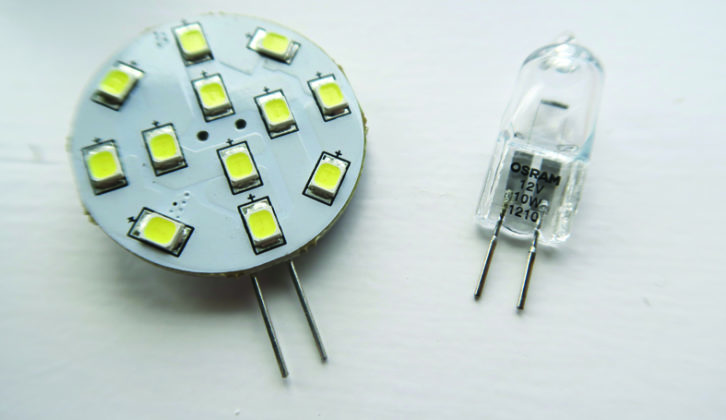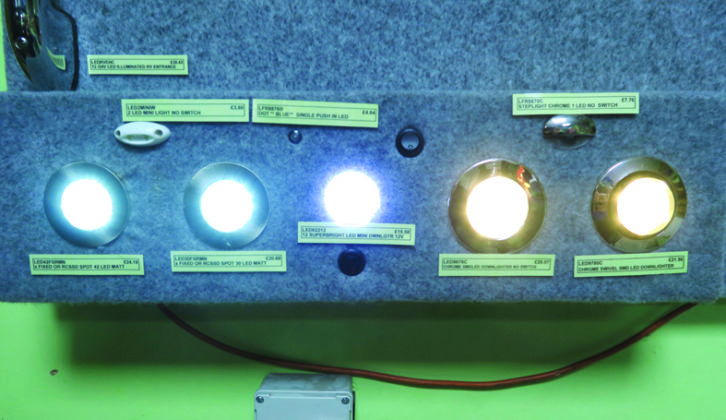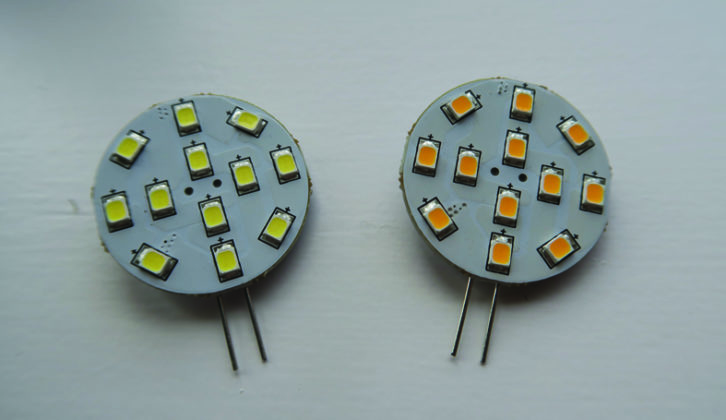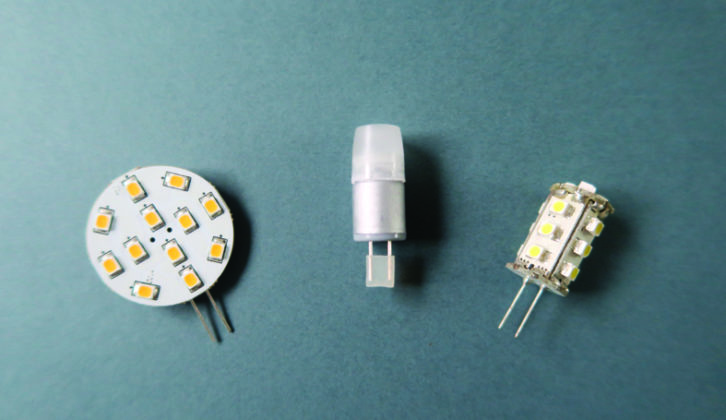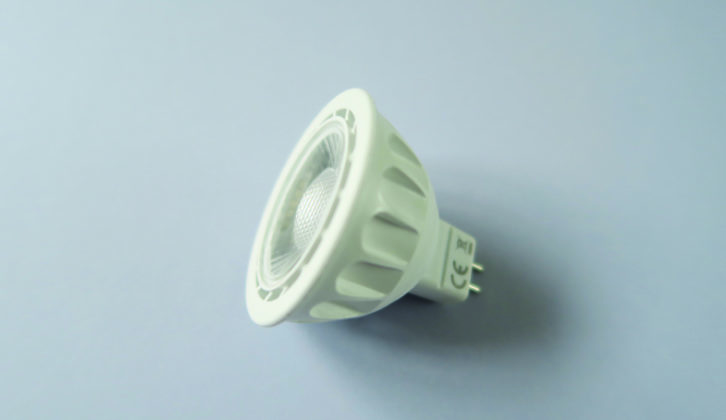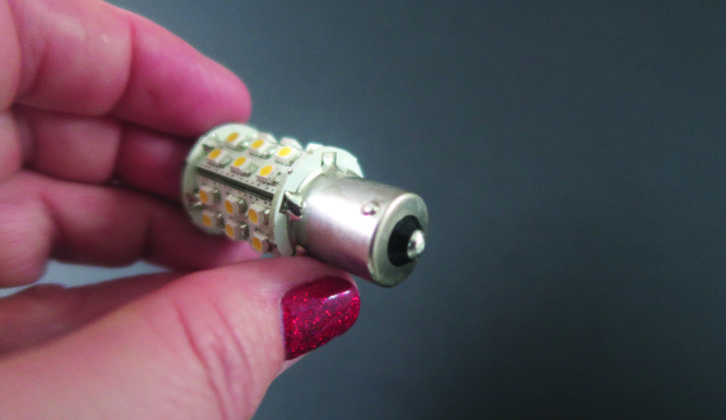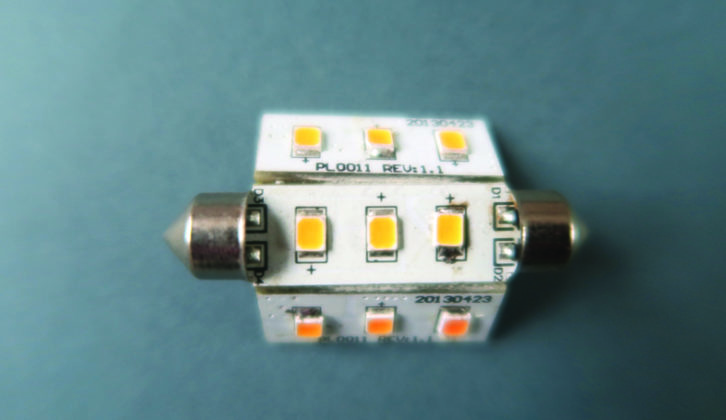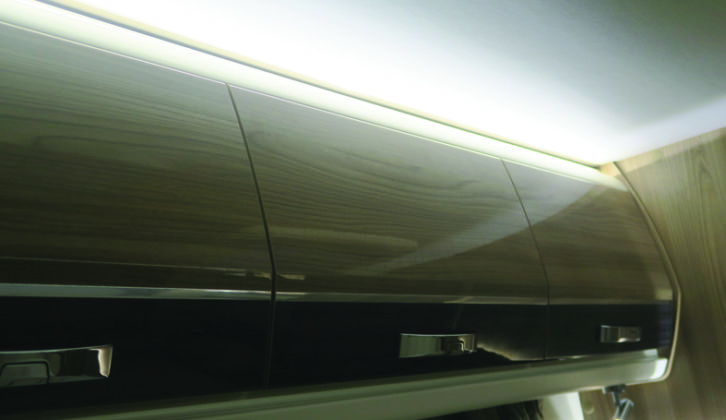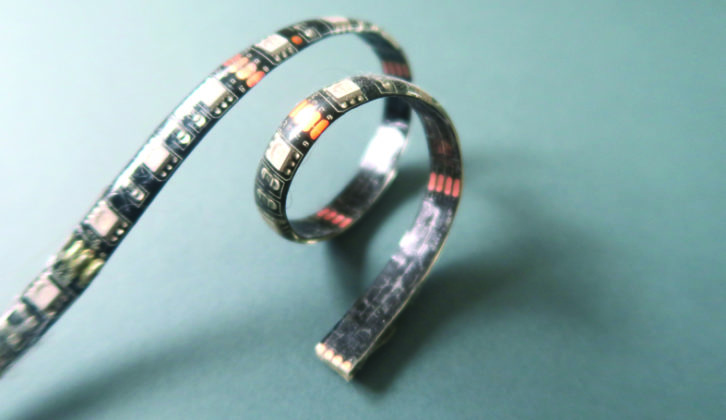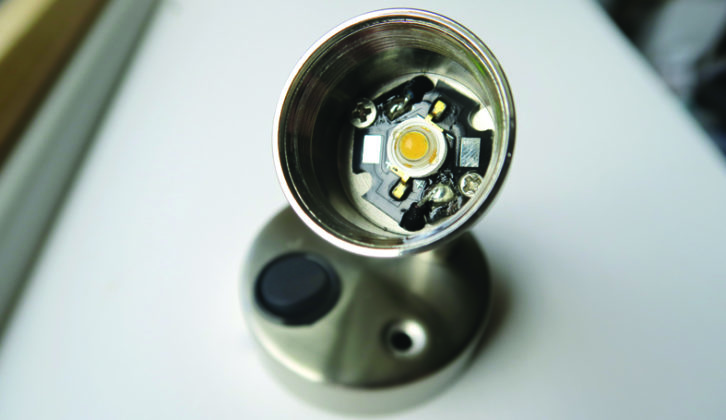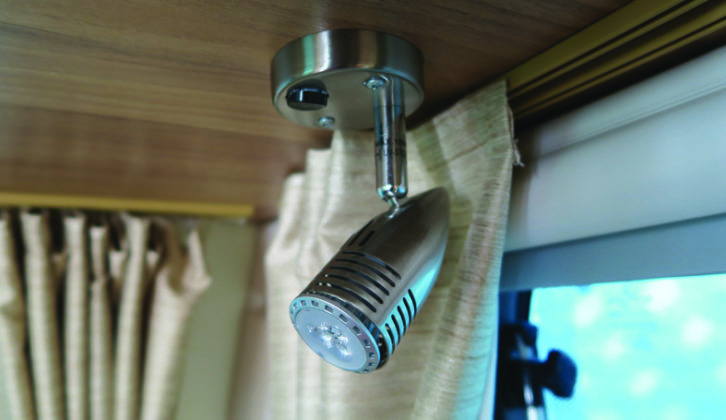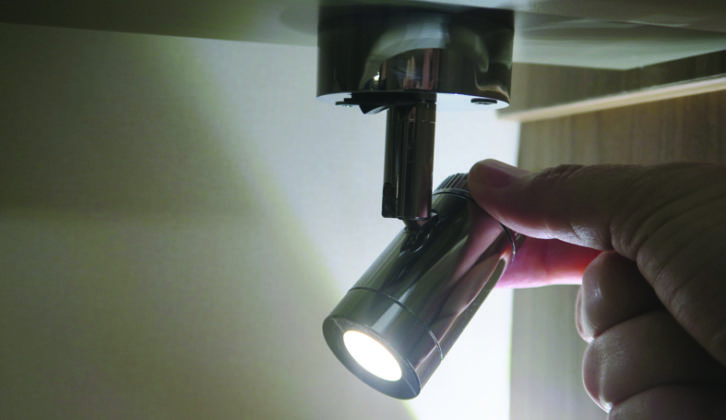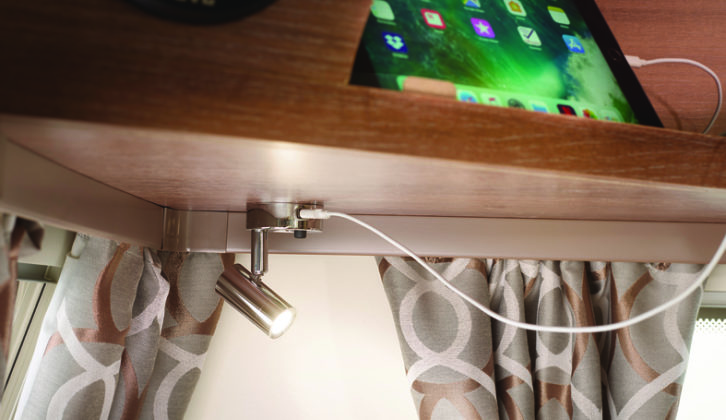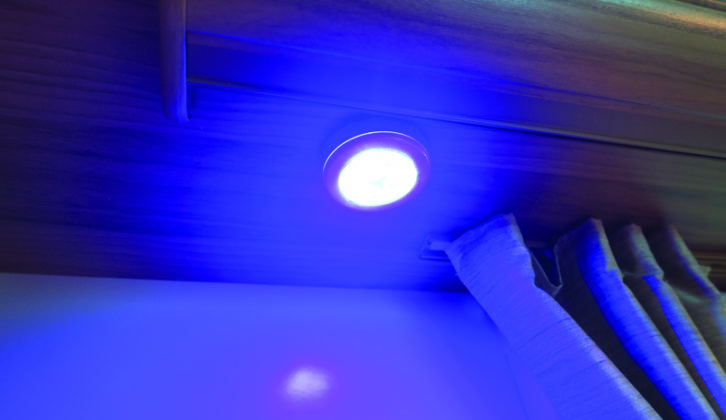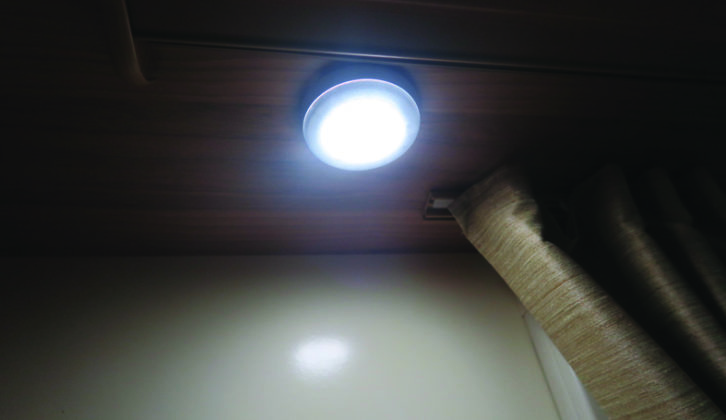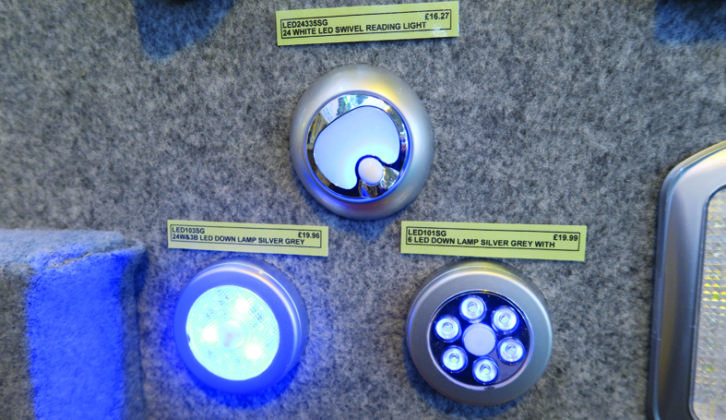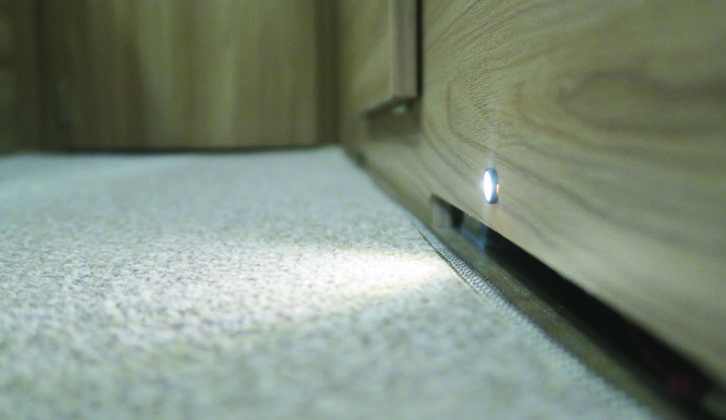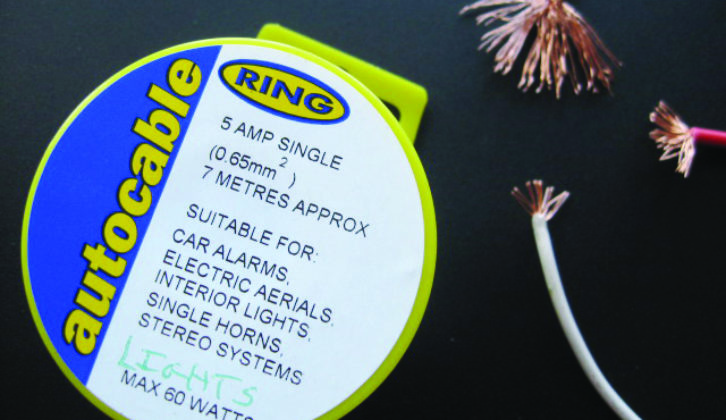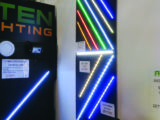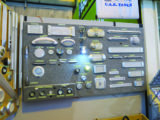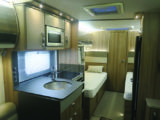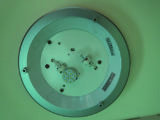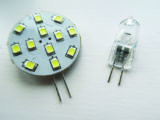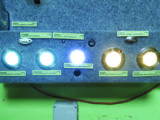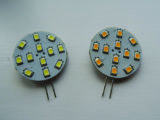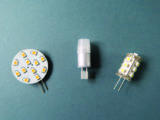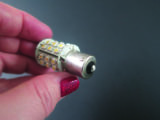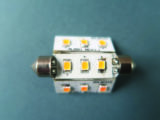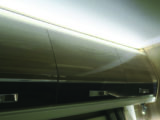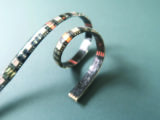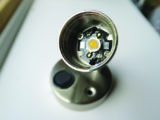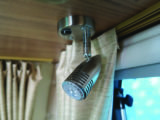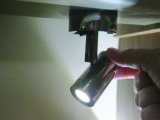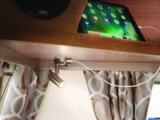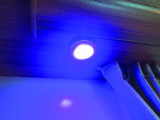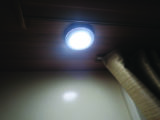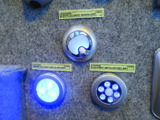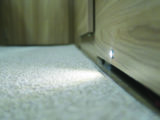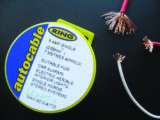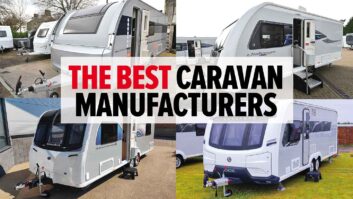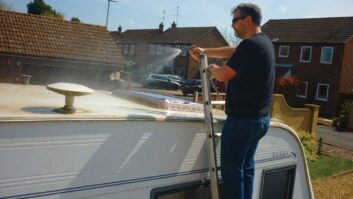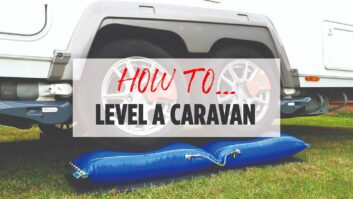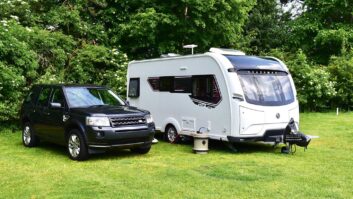Have you ever visited one of the national shows and been wowed by the huge array of LED lights that are now available on the market?
I often find myself – just like a moth – drawn to them!
Companies such as Leisure Lines/CAK Tanks help customers to get a feel for LEDs, by having a working display of products to assist buyers in choosing colour, style and function.
In a lot of older caravans, the interior lighting can seem rather dim. Some of these models still use halogen light bulbs.
In contrast, my new van has fantastic lighting and at night, can be lit up like the Starship Enterprise! But improving the lighting in your caravan is not a very difficult job and sometimes, can be as simple as changing a light bulb.
Halogen or LED?
Halogen bulbs are lightweight and low-cost, and offer instant brightness, but they can become extremely hot (a potential cause of burns) and are even capable of exploding.
The lamp is also sensitive to the oils in your skin; if you touch the bulb with your bare hands, it could rupture.
In contrast, the light-emitting diode or LED has a long lifetime (up to 100,000 hours), does not produce heat, is very robust and is cost-effective in the long run – you don’t have to change them so often. They also switch on rapidly, even when cold, and they are environmentally-friendly because they do not contain mercury. Some are lead-free.
Most importantly, they have a much lower power consumption – useful if caravanning off-grid.
Warm or cool?
Traditionally, LEDs had a ‘cool’ blue/white hue, which doesn’t appeal to some caravanners and can be a little blinding.
Now, manufacturers are developing a ‘warmer’ white/orange LED. These tend to make a van seem more homely and warm – albeit with a slight loss of light intensity.
There are no rules about which colour is ‘right’, because this is a personal preference on colour and use. If you like the traditional yellowish colour of a conventional lamp, warm white would be the ideal choice.
On the other hand, if you like a modern, clean look, you might prefer the cool white colour instead.
LED lights
There are many categories for LED light bulbs, so I will try to keep this simple by discussing the main ones on the market.
First, the most common are G4 LEDs, which come in two types – discs or towers. The discs can have either a side-pin or a back-pin option and provide light in one direction.
Tower LEDs provide light in all directions and are ideal for wall lights and lamps.
The MR11 and MR16 lights are similar to those we use in our homes. They are often found in spotlights and reading lights. These tend to come in a conical casing, with two short pins at the back. Check the diameter of the old bulb to identify the correct size when you replace it, because the MR16 is larger in diameter than the MR11.
The bayonet LED is often used in awning lights, spotlights and reading lights. Before you replace any of these, check the diameter of the end cap and count the number of metal ‘spots’ located on the base. It is possible to buy screw cap versions.
Festoon LEDs can be found in marker lights and roof lights. These come in two lengths, 37mm or 42mm. The number of LEDs housed in them ranges from three to nine.
Finally, there is flexible LED strip lighting, which is incredibly versatile. This can be used for downlighters under kitchen cupboards, or uplighters on lockers or bedheads.
The great thing about flexible strips is that they can be easily cut to size and usually have a self-adhesive backing, making them simple to mount. Look for waterproof ones to make great awning lights.
If you are unsure which bulb to buy, remove the old one to identify the shape and size that will work in your light fitting, or seek advice from the experts. Some older vans have 230V mains lights, so be sure you replace the correct voltage bulb.
Light fittings
The spotlights in our previous caravan had an integrated LED bulb that could not be removed, and with just the one bulb, the fitting only gave out a minimal level of light.
By changing the spotlight, we were able to improve the style, as well as increasing the light’s brightness – making it easier for me to read my book.
Fortunately, the screw holes on the old spotlight matched those of the new one, which meant I didn’t have to drill more holes into the wood.
There are some really great spotlights on the market and some are fitted as standard in some caravans. Look out for dimmable spotlights and directional spotlights that have a USB charging point.
Nightlights
My children have never been fans of sleeping in the dark, so nightlights were the simple solution for that problem.
Look out for multifunctional lights made up of three blue LEDs, which at the push of a button become a reading light consisting of 24 white LEDs. Our new nightlights were a real winner with the kids!
There’s a wide range on the market to choose from, so it is well worth shopping around to find the one that will best suit your family.
More and more manufacturers are fitting low-level nightlights in caravans these days – for example, these can be found in the Swift Conqueror 565.
These handy fittings won’t distract you from sleeping, but are very useful if you need to get up during the night.
If you are thinking about adding additional lighting in your van, particularly in areas where the light levels are not great, this might necessitate running some extra cables, which will need to be installed by a competent person. Only thin-gauge flexible automotive cable is needed to run 12V LED light fittings.
Final thoughts
As prices come down, it is more common to find LEDs fitted as standard in caravans. There isn’t the space here to cover every bulb on the market, but this should give you an idea about what to look for when you upgrade. Visit one of the shows to see what’s out there!
Future Publishing Limited, the publisher of practicalcaravan.com, provides the information in this article in good faith and makes no representation as to its completeness or accuracy. Individuals carrying out the instructions do so at their own risk and must exercise their independent judgement in determining the appropriateness of the advice to their circumstances. Individuals should take appropriate safety precautions and be aware of the risk of electrocution when dealing with electrical products. To the fullest extent permitted by law, neither Future nor its employees or agents shall have any liability in connection with the use of this information. You should check that any van warranty will not be affected before proceeding with DIY projects.
By changing the spotlight, we were able to improve the style, as well as increasing the light's brightness - making it easier for me to read my book.
